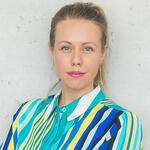Genetic mosaicism more common than thought
In a study led by Professor Jan Korbel, Senior Scientist and Head of Data Science at the European Molecular Biology Laboratory (EMBL), and Dr. Ashley Sanders, Group Leader at the Berlin Institute for Medical Systems Biology of the Max Delbrück Center (MDC-BIMSB), researchers have found that approximately one in 40 human bone marrow cells carry massive chromosomal alterations – copy number variations and chromosomal rearrangements for example – without causing any apparent disease or abnormality. In addition, cell samples from people over the age of 60 tended to have higher numbers of cells with such genomic alterations, suggesting a previously unidentified mechanism that may contribute to ageing-related diseases. The study was published in the journal “Nature Genetics.”
“The study highlights that we are all mosaics,” says Korbel. “Even so-called normal cells carry all sorts of genetic mutations. Ultimately, this means that there are more genetic differences between individual cells in our bodies than between different human beings.”
Detecting genomic details in single cells
Both Korbel and Sanders study how genetic structural variation – deletions, duplications, inversion and translocations of large sections of the human genome – contributes to the development of disease. In the cancer field, it is well known that genetic mutations can cause cells to grow out of control and lead to the formation of a tumor, explains Sanders. “We are applying similar concepts to understand how non-cancerous diseases develop,” she adds.
We are just recognizing that contrary to what we learned in textbooks, every cell in our body doesn't have the exact same DNA.
The discovery was enabled by a single-cell sequencing technology called Strand-seq, a unique DNA sequencing technique that can reveal subtle details of genomes in single cells that are too difficult to detect with other methods. Sanders is a pioneer in the development of the technology. As part of her doctoral research, she helped develop the Strand-seq protocol, which she later honed with colleagues while working as a post-doc in Korbel’s lab. Strand-seq enables researchers to detect structural variants in individual cells with better precision and resolution than any other sequencing technology allows, Sanders says. The technology has ushered in an entirely new understanding of genetic mutations and is now being widely used to characterize genomes and to help translate findings into clinical research. “We are just recognizing that contrary to what we learned in textbooks, every cell in our body doesn't have the exact same DNA,” she says.
Genetic mosaicism is common
The study represents the first time anyone has used Strand-seq technology to study mutations in the DNA of healthy people. The researchers included biological samples from a range of age groups – from newborn to 92-years-old – and found mutations in blood stems cells, which are located in the bone marrow, in 84 percent of the study participants, indicating that large genetic mutations are very common. “It’s just amazing how much heterogeneity there is in our genomes that has gone undetected so far,” says Sanders. “What this means in terms of how we define normal human aging and how this can impact the types of diseases we get is really an important question for the field.”
The study also found that in people over the age of 60, bone marrow cells carrying genetic alterations tended to be more abundant, with populations of specific genetic variants, or sub-clones, more common than others. The frequent presence of these so-called sub-clones suggests a possible connection to aging. But whether the mechanisms that keep sub-clones from proliferating in check break down as we age, or whether the expansion of sub-clones itself contributes to diseases of aging is not known, says Korbel. “In the future, our single cell studies should give us clearer insights into how these mutations that previously went unnoticed affect our health and potentially contribute to how we age.”
Text: Gunjan Sinha
Further information
Literature
Karen Grimes et al (2024): “Cell type-specific consequences of mosaic structural variants in hematopoietic stem and progenitor cells”, Nature Genetics, DOI: 10.1038/s41588-024-01754-2
Photo caption
An illustration of cells that demonstrates the concept of genetic mosaicism in blood stem cells. Photo: Creative Team EMBL, adobestock.com
Contacts
Prof. Jan Korbel
Head of Data Science
European Molecular Biology Lab
jan.korbel@embl.de
Dr. Ashley Sanders
Group Leader
Genome instability and somatic mosaicism
Max Delbrück Center
+49 30 9406-1426
ashley.sanders@mdc-berlin.de
Gunjan Sinha
Editor, Communications
Max Delbrück Center
+49 30 9406-2121
gunjan.sinha@mdc-berlin.de or presse@mdc-berlin.de
Lisa Vollmar
Press Officer
European Molecular Biology Laboratory
+49 6221 387-8125
lisa.vollmar@embl.org or media@embl.org
- Max Delbrück Center
The Max Delbrück Center for Molecular Medicine in the Helmholtz Association (Max Delbrück Center) is one of the world’s leading biomedical research institutions. Max Delbrück, a Berlin native, was a Nobel laureate and one of the founders of molecular biology. At the locations in Berlin-Buch and Mitte, researchers from some 70 countries study human biology – investigating the foundations of life from its most elementary building blocks to systems-wide mechanisms. By understanding what regulates or disrupts the dynamic equilibrium of a cell, an organ, or the entire body, we can prevent diseases, diagnose them earlier, and stop their progression with tailored therapies. Patients should be able to benefit as soon as possible from basic research discoveries. This is why the Max Delbrück Center supports spin-off creation and participates in collaborative networks. It works in close partnership with Charité – Universitätsmedizin Berlin in the jointly-run Experimental and Clinical Research Center (ECRC), the Berlin Institute of Health (BIH) at Charité, and the German Center for Cardiovascular Research (DZHK). Founded in 1992, the Max Delbrück Center today employs 1,800 people and is 90 percent funded by the German federal government and 10 percent by the State of Berlin. www.mdc-berlin.de
- EMBL
The European Molecular Biology Laboratory (EMBL) is Europe’s life sciences laboratory. We provide leadership and coordination for the life sciences across Europe, and our world-class fundamental research seeks collaborative and interdisciplinary solutions for some of society’s biggest challenges. We provide training for students and scientists, drive the development of new technology and methods in the life sciences, and offer state-of-the-art research infrastructure for a wide range of experimental and data services. EMBL is an intergovernmental organization with 29 member states, one associate member, and one prospective member. At our six sites in Barcelona, Grenoble, Hamburg, Heidelberg, Hinxton near Cambridge, and Rome, we seek to better understand life in its natural context, from molecules to ecosystems. www.embl.org






